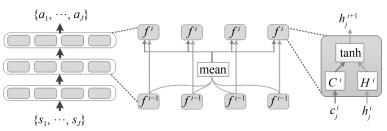
|
|||||
|
|
| 多Agent深度强化学习综述 | |
| 引用本文: | 梁星星, 冯旸赫, 马扬, 程光权, 黄金才, 王琦, 周玉珍, 刘忠.多Agent深度强化学习综述.自动化学报, 2020, 46(12): 2537−2557 doi: 10.16383/j.aas.c180372 |
| 作者姓名: | 梁星星 冯旸赫 马扬 程光权 黄金才 王琦 周玉珍 刘忠 |
| 作者单位: | 1.国防科技大学系统工程学院 长沙 410072 |
| 基金项目: | 国家自然科学基金71701205国家自然科学基金62073333 |
| 摘 要: |  近年来,深度强化学习(Deep reinforcement learning,DRL)在诸多复杂序贯决策问题中取得巨大突破.由于融合了深度学习强大的表征能力和强化学习有效的策略搜索能力,深度强化学习已经成为实现人工智能颇有前景的学习范式.然而,深度强化学习在多Agent系统的研究与应用中,仍存在诸多困难和挑战,以Sta... |
| 关 键 词: | 多Agent系统 深度学习 深度强化学习 通用人工智能 |
| 收稿时间: | 2018-06-04 |
| 点击此处可从《自动化学报》浏览原始摘要信息 | |
| 点击此处可从《自动化学报》下载免费的PDF全文 | |